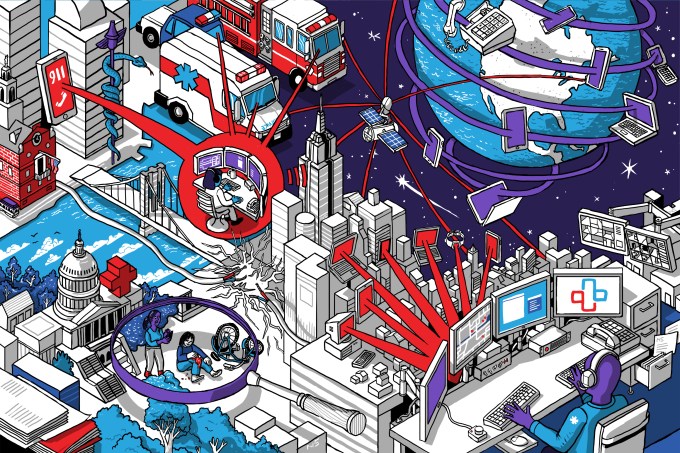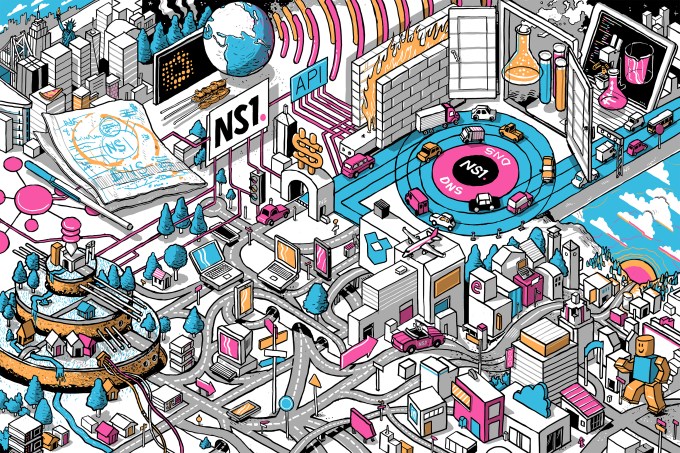One of TechCrunch+‘s flagship editorial offerings, the TC-1 is an authoritative, deep analysis into a growth-stage company that not only offers a panoramic view of a specific business, but also teaches lessons learned from the veterans of these organizations, whether they be founders, sales leaders, product managers, software engineers, marketers or anyone else who contributed to the growth of a startup.
The goal with each TC-1 is to help TechCrunch readers understand the intricacies of building a company from as many angles as possible, while also getting situational intelligence on the best tech companies scaling up in the market today. The TC-1 takes its name from the Form S-1 filing that late-stage startups submit to the SEC as part of the IPO process.
Kindbody

Image Credits: Nigel Sussman
- Part 1: Origin story “How compassion and inclusivity are helping Kindbody change the fertility industry” (2,400 words/10 minutes) — Explores how Kindbody is disrupting the fertility services space with an approach that prioritizes compassion and inclusivity.
- Part 2: Business and marketing “Why focusing on holistic care helped Kindbody triple its revenue in 2021” (3,300 words/13 minutes) — Evaluates how Kindbody’s holistic focus on patient education, tech and savvy marketing is helping it grow at a breakneck pace.
- Part 3: Wider issues “Chipping away at the problems of reproductive healthcare, one patient at a time” (2,500 words/10 minutes) — Looks at the current state of reproductive healthcare, and the long way ahead of Kindbody and similar companies.
Bowery Farming

Image Credits: Nigel Sussman
- Part 1: Origin story “Bowery Farming is forcing us all to look up at the future of vertical agriculture” (3,500 words/14 minutes) — explores the evolution of vertical farming, it’s expansion in Japan and how Bowery Farming was started to bring indoor farming to the masses in the United States.
- Part 2: Produce development “Hacking lettuce for taste and profit” (2,500 words/10 minutes) — evaluates how Bowery collects data from its farms in order to optimize flavor while also potentially expanding its produce line into new categories like strawberries and turnips.
- Part 3: Agtech engineering “Can LEDs ultimately replace the sun?” (2,100 words/8 minutes) — investigates two of the most important questions about Bowery Farming: Can it develop a competitive moat with its technology (which it dubs BoweryOS) and just how much environmental benefit can the company derive from its farms?
- Part 4: Branding, finances and competitive landscape “The voracious fight for your salad bowl” (3,000 words/12 minutes) — looks at the extremely competitive nature of the produce section at the grocery store and how Bowery intends to build a brand with consumers while finding a route to profitability.
Automattic

Image Credits: Nigel Sussman
- Part 1: Origin story “How doing everything wrong turned Automattic into a multibillion dollar media powerhouse” (3,850 words/15 minutes) — explores the formation of Automattic in the wake of the success of the WordPress project and how a 21-year-old jazz saxophonist with a side hobby in publishing became a media magnate.
- Part 2: Open source development “There’s nothing Automattic about balancing commercial growth with an open source developer community” (2,500 words/10 minutes) — investigates the tensions inherent in being a commercial backer of an open source project, and how Automattic balances pushing the community forward while allowing contributors to participate in the project.
- Part 3: Acquisitions and future strategy “Can social and e-commerce transform the future of the open web?” (2,350 words/9 minutes) — analyzes Automattic’s long history of acquisitions and expansions by surveying the company’s initiatives in e-commerce and social media, two competitive verticals upon which its future success will be built.
- Part 4: Remote work culture “The future of remote work is text” (2,000 words/8 minutes) — reports on the development of Automattic’s unique corporate culture, which was remote years before the corporate tech world was ready for work from home, and how the company centralizes communications around text.
Nuro

Image Credits: Nigel Sussman
- Part 1: Origin story “How Google’s self-driving car project accidentally spawned its robotic delivery rival” (3,200 words/13 minutes) — explores the early days of Nuro and its founders and how they realized that the most useful robot they could ever build would be an autonomous delivery vehicle.
- Part 2: Regulations “Why regulators love Nuro’s self-driving delivery vehicles” (2,400 words/10 minutes) — analyzes how Nuro won over federal regulators and navigated a patchwork of policies to be able to test and deploy its autonomous delivery vehicles in several states.
- Part 3: Partnerships “How Nuro became the robotic face of Domino’s” (2,500 words/10 minutes) — digs into Nuro’s relationship with Domino’s as well its trials with other companies including fast casual restaurant chain Chipotle, Kroger grocery stores and CVS pharmacies and how those relationships have affected the design and functions of the R2 bot.
- Part 4: Operations “Here’s what the inevitable friendly neighborhood robot invasion looks like” (2,500 words/10 minutes) — examines where Nuro has set up shop, and more importantly, how it goes about picking locations and learning from its experiences.
RapidSOS

Image Credits: Nigel Sussman
- Part 1: Origin story “Smoking pizza ovens and pilfered dollar bills, or the early story of RapidSOS” (2,700 words/11 minutes) — explores the early years of RapidSOS and the company’s pivot from consumer app to govtech and integrated services for technology and device companies.
- Part 2: Product and business “RapidSOS learned that the best product design is sometimes no product design” (3,700 words/15 minutes) —analyzes how RapidSOS made its pivot and why its current business model has performed so well.
- Part 3: Partnerships “How RapidSOS used creative tactics to build partnerships and a BD engine at scale” (4,000 words/16 minutes) —investigates how RapidSOS has built up so many dozens of corporate and individual partnerships in its quest to transform 911.
- Part 4: Next-generation 911 “After a decade, Congress might finally bring 911 into the internet age” (2,000 words/8 minutes) —looks at the future of 911 after a decade of stagnation and limited funding from Capitol Hill as well as the future prospects of RapidSOS.
CockroachDB EC-1

Image Credits: Nigel Sussman
- Part 1: Origin story “CockroachDB, the database that just won’t die” (2,100 words/8 minutes) — Looks at the origins of CockroachDB, from the creation of the popular open-source image editor GIMP to some of Google’s most well-known infrastructure products.
- Part 2: Technical design “How engineers fought the CAP theorem in the global war on latency” (2,400 words/10 minutes) — Analyzes the key differentiation that CockroachDB offers the relational database market, particularly its focus on geography and data storage.
- Part 3: Developer relations and business “‘Developers, as you know, do not like to pay for things‘” (2,200 words/9 minutes) — Explores how CockroachDB engages with developers while also pivoting to the cloud at a key inflection point in its business.
- Part 4: Competitive landscape and future “Scaling CockroachDB in the red ocean of relational databases” (2,400 words/10 minutes) — Evaluates the future of the startup within the extremely competitive landscape of relational databases and what possible exit routes might look like.
NS1 EC-1

Image Credits: Nigel Sussman
- Part 1: Origin story “1 napkin and 22 lines of code, or how NS1 rewrote the rules of internet infrastructure” (2,700 words/11 minutes) — Sets the context for NS1’s business and provides a brief explanation of why DNS (the technology at the core of the NS1 service) matters.
- Part 2: Product development and roadmap “WTF is NS1? It’s DNS, DDI, and maybe other TLAs” (2,700 words/11 minutes) — Analyzes NS1’s products, vision and open-source efforts through NS1 Labs.
- Part 3: Competitive landscape “The fight for the future of DNS is white hot” (2,300 words/9 minutes) — Evaluates how NS1 competes in a space littered with well-funded Big Tech companies and well-established mature companies.
- Part 4: Customer development “Outages, pandemics and the reengineering of traffic on the internet” (2,600 words/10 minutes) — Explores how companies like Roblox and Pinterest have had to reshape their networking infrastructure in light of massive growth and increasing demands for resilience from users.
Nubank EC-1

Image Credits: Nigel Sussman
- Part 1: Origin story “How contrarian hires and a pitch deck started Nubank’s $30 billion fintech empire” (2,350 words/9 minutes) — Explores the challenges and opportunities in Brazil’s banking system and how co-founder David Velez assembled a unique team to take on some of the richest banks in the world.
- Part 2: Co-founder dynamics “One woman’s drive to make a neobank as magical as Disney” (1,900 words/8 minutes) — Profiles Nubank co-founder Cristina Junqueira and how she linked up with Velez, fundraised while pregnant and adapted her role to match the frantic pace of scaling Nubank.
- Part 3: Launching and scaling “How Nubank’s CX strategy made it one of the most loved digital banks” (2,700 words/11 minutes) — Analyzes the launch of Nubank’s now ubiquitous purple credit card, how the company scaled to serve as many people as possible, and its eventual foray into banking.
- Part 4: Market expansion and future “Which Nubank will own the financial revolution?” (2,250 words/9 minutes) — Evaluates Nubank’s expansion into Mexico and Colombia, the competitive landscape in Brazil, and the challenges that lie ahead.
Expensify EC-1

Image Credits: Nigel Sussman
- Part 1: Origin story “How a band of P2P hackers planted the seeds of a unique expense management giant” (2,400 words/10 minutes) — Explores the colorful history of the Expensify founders’ days with Travis Kalanick’s venture before Uber, a P2P content distribution startup called Red Swoosh, and how that experience would eventually influence what would one day become an expense management giant.
- Part 2: Culture: “How Expensify got to $100M in revenue by hiring ‘stem cells’ and not ‘cogs in a wheel’” (3,120 words/12.5 minutes) — Analyzes how taking an original approach to hiring, retention and growth helped Expensify establish a culture of efficiency, autonomy and collaboration.
- Part 3: Expansion and remote work: “How Expensify shed Silicon Valley arrogance to realize its global ambitions” (3,250 words/13 minutes) — Looks at how the company broke out of the Silicon Valley by expanding to rural Michigan, while building a work-from-anywhere culture.
- Part 4: Engineering and technology: “How Expensify hacked its way to a robust, scalable tech stack” (3,300 words/13 minutes) — Explores how Expensify’s early decisions around database management, open source and AI helped it build a unique and scalable tech stack that gels with its business model.
- Part 5: Business model: “How bottom-up sales helped Expensify blaze the path for SaaS” (4,200 words/17 minutes) — Examines how Expensify’s product-led growth approach gave it a big advantage with the SMB market it was targeting, but scared off VCs and investors until the company reached profitability.
Duolingo EC-1

Image Credits: Nigel Sussman (opens in a new window)
- Part 1: Origin story “How a bot-fighting test turned into edtech’s most iconic brand, Duolingo” (3,300 words/13 minutes) – looks at how Guatemalan immigrant entrepreneur Luis von Ahn pivoted from fighting bot attacks on login screens with squiggly text to building one of edtech’s great success stories.
- Part 2: Product-led growth strategy “The product-led growth behind edtech’s most downloaded app” (3,000 words / 12 minutes) – analyzes the tactics and tradeoffs that an edtech company has to evaluate as it grows from thousands to 500 million registered learners.
- Part 3: Monetization “How Duolingo became fluent in monetization” (2,800 words/11 minutes) – examines how Duolingo experimented with a variety of different business models to match its unique community, and why it chose subscription in the end.
- Part 4: New initiatives and future outlook “Duolingo can’t teach you how to speak a language, but now it wants to try” (3,100 words/12 minutes) – explores how Duolingo is launching new business lines, their chances for success, and how the company is attempting to expand its main product from basic language fluency to mastery while adding speaking skills to the mix.
Klaviyo EC-1

Image Credits: Nigel Sussman
- Part 1: Origin story “How Klaviyo transformed from a lifestyle business into a $4.15B email titan” (2,600 words/10 minutes) — Explores the rise of Klaviyo from a database for e-commerce data into a modern email powerhouse as it successively learned from customers and bootstrapped in the absence of funding from accelerators and early VCs.
- Part 2: Business and growth “How Klaviyo used data and no-code to transform owned marketing” (3,000 words/12 minutes) — Analyzes Klaviyo’s recent growth and how marketers increasingly focus on owned marketing channels and customer experience management.
- Part 3: Dynamics of e-commerce marketing “Marketing in 2021 is emotional and not just transactional” (2,200 words/9 minutes) — To fully understand Klaviyo and this new world of martech, this article contextualizes how and why marketers are increasingly trying to personalize and build deeper emotional bonds with their customers outside of social media channels.
- Part 4: Lessons on startup growth “Drama and quirk aren’t necessary for startup success” (1,900 words/8 minutes) — Founders shouldn’t have to keep learning the same lessons over and over again. Klaviyo offers a number of tried-and-true tutorials to understand how to build a competitive startup and not get bogged down in finding product-market fit and scaling.
StockX EC-1

Image Credits: Nigel Sussman
- Part 1: Origin story “How StockX became the stock market of hype” (2,500 words / 10 minute reading time) — Investigates how StockX evolved from a basic aggregation of price data into the multibillion dollar juggernaut we see today.
- Part 2: E-commerce authentication “Authentication and StockX’s global arms race against fraudsters” (3,700 words / 15 minute reading time) — A deeply nuanced analysis of StockX’s key product of authentication and the challenges of building a trusted market against an onslaught of scammers heavily incentivized to get a fake good sold.
- Part 3: Competitive and consumer landscape “Where StockX fits in the business of sneakers” (2,800 words / 11 minute reading time) — Explores how the company connected buyers and sellers, as well as its long-term impact on both groups.
- Part 4: Future and impact “The consequences of scaling up sneaker culture” (2,700 words / 11 minute reading time) — Looks at how StockX and the changes it has wrought have led to a massive change in the culture of sneakers and what that portends long term.
Tonal EC-1

Image Credits: Nigel Sussman
- Part 1: Origin Story “How a homegrown experiment became one of the fastest-growing companies in fitness tech” (3,200 words / 13 minutes) — we start with the history of Tonal, the multi-year effort to raise VC funds and iterate on a product while reinventing the definition of strength-training equipment
- Part 2: Product launch “Millions of dollars and 3.5 years, and it all came down to this” (2,800 words / 11 minutes) — explores the tradeoffs and tactics Tonal used to launch its product, a launch that as a hardware company, it couldn’t afford to mess up
- Part 3: Community building “Building online communities for fun, profit and product” (2,200 words / 9 minutes) — analyzes Tonal’s early forays into community building and how it uses community to improve its products while also retaining customers for its critical subscription business
- Part 4: Competitive landscape and future “ Can Tonal become the luxury fitness market champion?” (2,400 words / 10 minutes) — evaluates the keen competition confronting Tonal in this market, and analyzes the company’s next steps to continue its successful growth
Virtual Worlds EC-1 (Special Series)

Image Credits: Bryce Durbin
- Part 1: “Games already are social networks” (1,400 words, 5 minutes)
- Part 2: “Why social networks want even more gaming” (1,300 words, 5 minutes)
- Part 3: “What virtual worlds in this transition era will look like” (1,500 words, 6 minutes)
- Part 4: “Why didn’t this already happen?” (1,100 words, 4 minutes)
- Part 5: “Multiverse virtual worlds will be healthier for society than our current social networks” (1,100 words, 4 minutes)
- Part 6: “Making money from games: The future of virtual economies” (4,000 words, 16 minutes)
- Part 7: “The companies that will shape the multiverse era” (3,000 words, 12 minutes)
Unity EC-1 (Mini)

- Origin Story (2,800 words / 11 minutes) “How Unity built the world’s most popular game engine” — explores the rise of one of the world’s most popular game engines and how Unity is transforming the development of cross-platform games
Published later, during the company’s IPO process:
- Part 1: “Unity IPO aims to fuel growth across gaming and beyond” (3,600 words / 15 minutes) — analyzed the IPO case for Unity using extensive interviews with Unity’s senior executive team
- Part 2: “Bear and bull cases for Unity’s IPO” (3,100 words / 12 minutes) — observes the different scenarios for Unity given the changing market for game engines
The Kobalt EC-1

Image: Bryce Durbin / TechCrunch
- Part 1: Founding Story and Overview “How a Swedish saxophonist built Kobalt, the world’s next music unicorn” (3,000 words / 12 minutes) — explores the history of Kobalt from a small town in Sweden to the modern music juggernaut it finds itself as today
- Part 2: The business of recording royalties “How Kobalt is simplifying the killer complexities of the music industry” (3,400 words / 14 minutes) — analyzes the changing nature of the music business from the lens of the royalties for a single song
- Part 3: Building a new economic class of musicians “How Kobalt is betting on music’s middle class and DIY stars” (3,800 words / 15 minutes) — investigates the rise of a new wave of digital-first musicians and how Kobalt’s artist services may disrupt record labels going forward
- Part 4: Competitive landscape “Kobalt’s edge in changing the music industry” (1,800 words / 7 minutes) — analyzes the changing nature of the competitive landscape in music and how Kobalt has positioned itself to succeed as companies like Spotify and Apple Music take a greater share
The Roblox EC-1

- Part 1: Origin story “How Roblox avoided the gaming graveyard and grew into a $2.5B company” (3,600 words / 14 minutes) — explores the slow and steady rise of Roblox from its origins as a physics simulator into the modern gaming platform for children you see today
- Part 2: Growth strategy “Digging into the Roblox growth strategy” (3,000 words / 12 minutes) — analyzes the different constituencies of Roblox from children to parents to developers and how Roblox uses different strategies and tactics to engage them on its platform
- Postscript: Lessons learned “3 lessons from Roblox’s growth to gaming dominance” (800 words / 4 minutes) — a few takeaways on what Roblox’s success means for other startup founders
The Niantic EC-1

Image Credits: Nigel Sussman (opens in a new window)
- Part 1: Origin story How a Google side project evolved into a $4 billion company (4,400 words / 18 minutes) — The long and at times turbulent founding story of one of the most successful spinouts in software history.
- Part 2: Product launch strategy Pokémon GO and the April Fools’ joke that made billions (7,900 words / 31 minutes) — The launch of Pokémon GO was wildly popular, but it wasn’t always a smooth ride.
- Part 3: Brand building and expansion Harry Potter, the Platform, and the future of Niantic (6,050 words / 24 minutes) — In 2019, how does Niantic become more than a mobile gaming company?
- Part 4: Growth strategy Nine lessons on how Niantic reached a $4B valuation (5,125 words / 21 minutes) — Takeaways from Niantic’s growth story.
The Patreon EC-1

Image Credits: Bryce Durbin
- The Story (2,100 words / 8 minutes) — A look at the hopes and dreams of two founders, the challenges of starting a company, as well as thoughts on fundraising and recruiting.
- The Product (4,400 words / 18 minutes) — A comprehensive analysis of Patreon’s product strategy and how it has recently refocused on serving creators rather than being a content destination for patrons.
- The Business (4,900 words / 20 minutes) — A deep dive into the business model, financials, revenues, churn, customer retention, segmentation and other key metrics of Patreon using a wide array of public and private datasets.
- The Thesis (2,750 words / 11 minutes) — An argument for how Patreon becomes a massive company, exploring the necessary market conditions and steps it will need to take to reach its zenith.
- The Competition (3,950 words / 16 minutes) — A backgrounder on the myriad threats and competitors targeting Patreon, including social networks like Facebook, vertical subscription platforms, talent agencies, and political controversy.
- Reading Guide (2,050 words / 8 minutes) — A bonus annotated guide to the news articles, analyses, videos, and data about Patreon that have been posted in the past and are worth referencing if you would like to research the company further.
- The Future and Exit Analysis (2,700 words / 11 minutes) — A final analysis of what the future holds for Patreon, as well as the potential acquirers and the hypothetical math of an IPO.